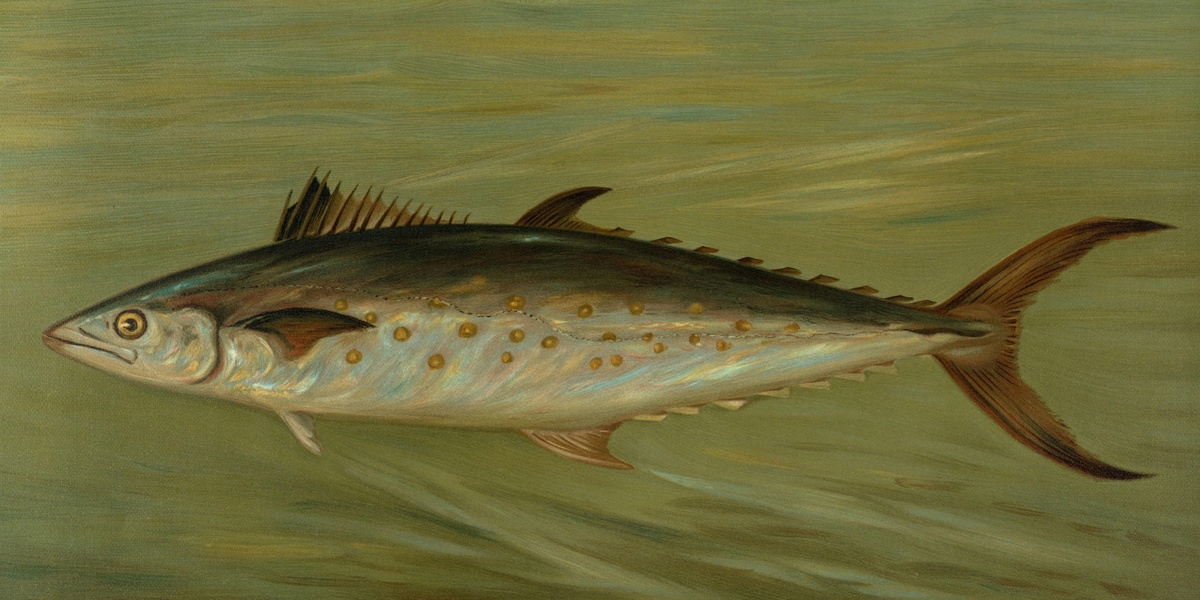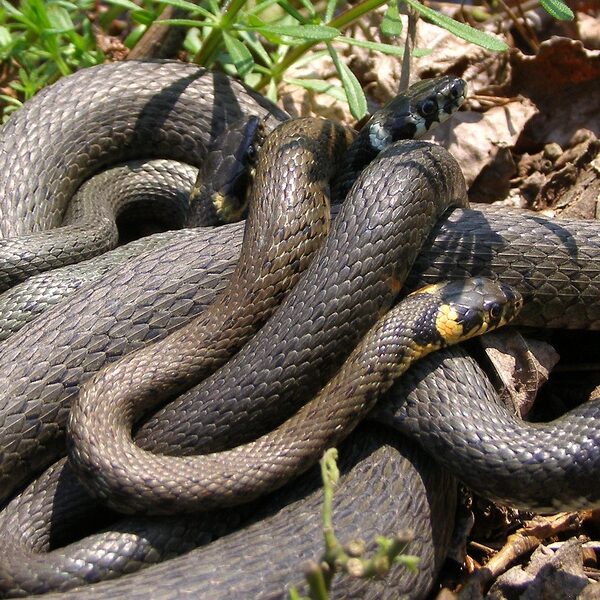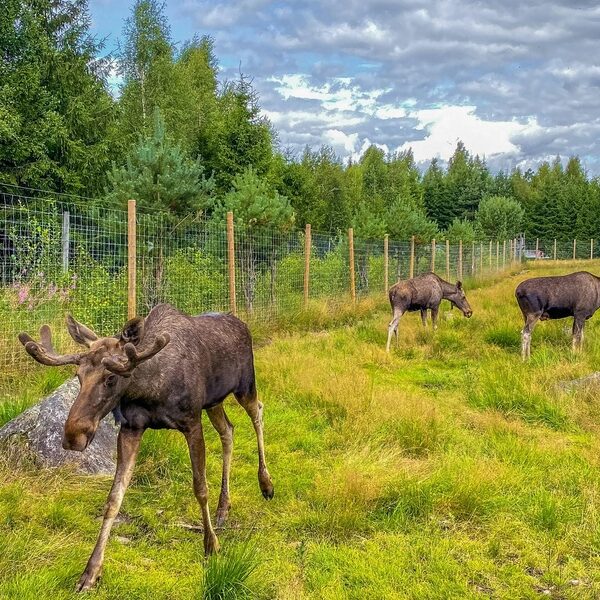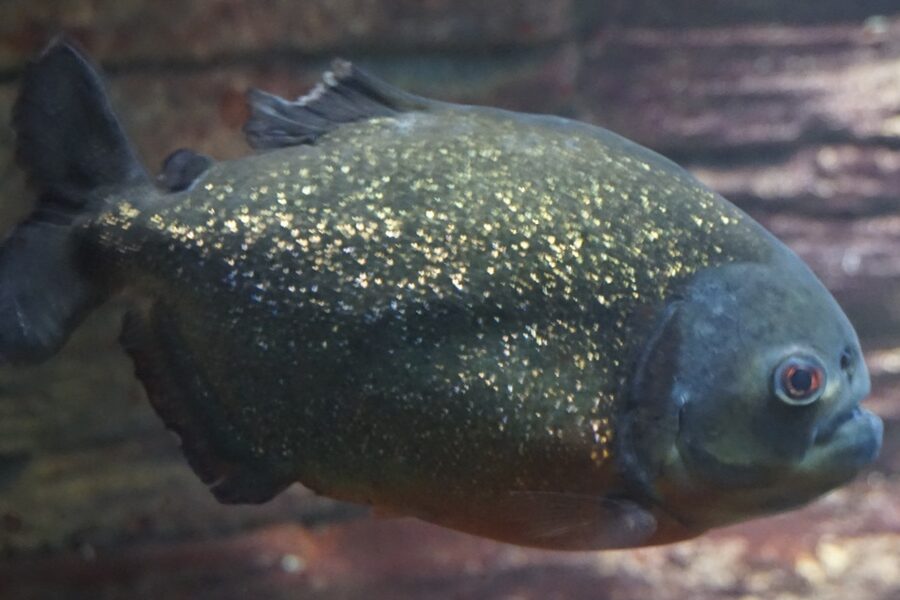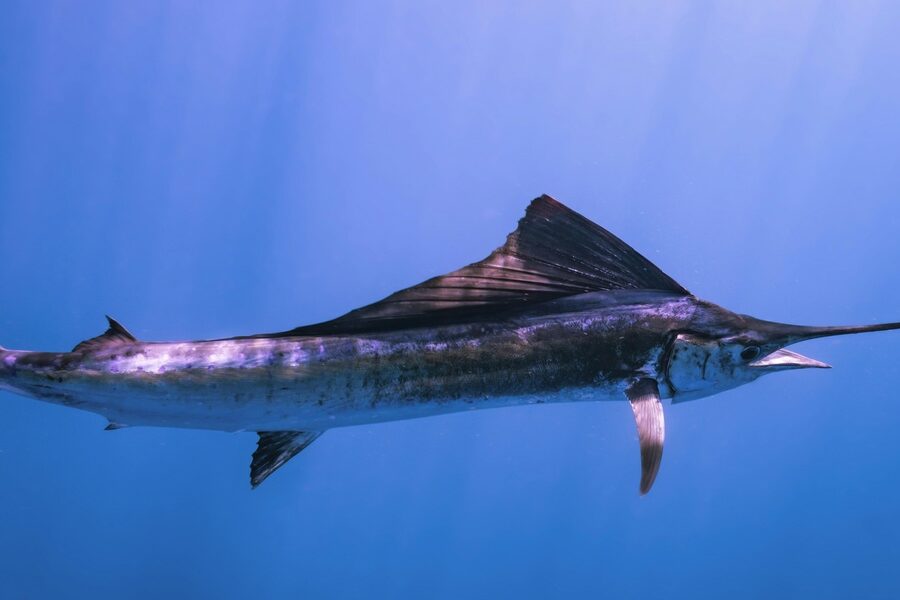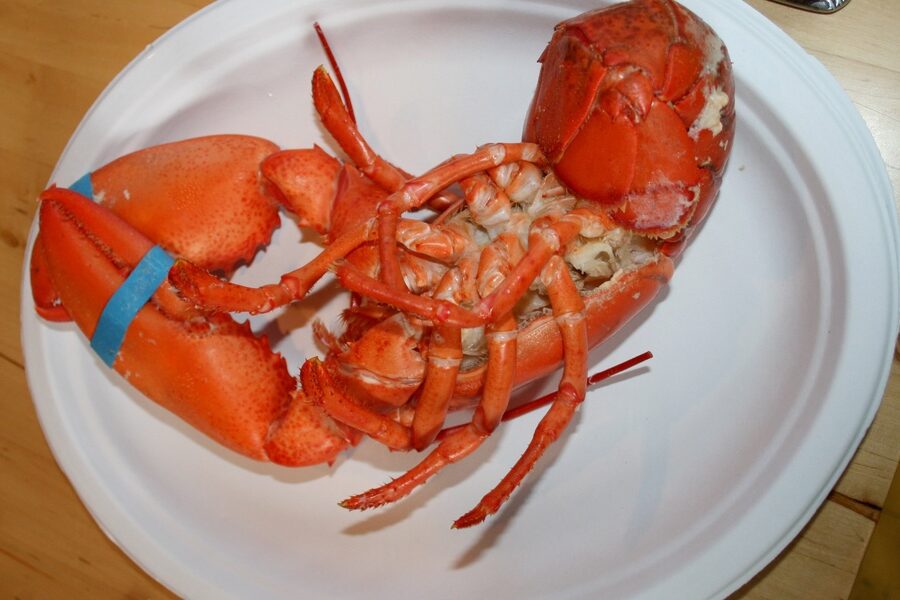Norway’s coastline, from sheltered fjords to exposed Arctic waters, supports a wide and varied fish fauna that locals and visitors encounter in markets, boats and on nature trips. Seasonal migrations, cold-water habitats and long-established fishing traditions shape what you’ll find on hooks and plates along these shores.
There are 55 Fish of Norway, ranging from Arctic char to Witch (grey sole). Each entry below is organized with the following columns: Scientific name,Distribution,Size (cm),Edibility/status — giving quick, comparable details for identification and use, and you’ll find these entries below.
What are the most common edible fish I should look for in Norway?
In coastal markets and restaurants you’ll frequently see cod, haddock, Atlantic salmon and mackerel; these are widely fished, well-suited to cooking, and often labeled with size and edibility notes in the list below so you can choose for taste or sustainability.
How is distribution information useful when identifying fish in Norway?
Distribution notes show whether a species is coastal, deep-water, northern or widespread, which helps narrow identification during trips and informs where to expect species like Arctic char in inland cold waters versus Witch (grey sole) on sandy seabeds.
Fish of Norway
| Name | Scientific name | Distribution | Size (cm) | Edibility/status |
|---|---|---|---|---|
| Atlantic cod | Gadus morhua | Coastal Norway, fjords, continental shelf | 200 | Major commercial and recreational fish, important cuisine |
| Haddock | Melanogrammus aeglefinus | North Sea, Skagerrak, coastal waters | 100 | Valued food fish and commercial target |
| Saithe (coalfish) | Pollachius virens | Coasts, fjords and shelf waters around Norway | 140 | Important commercial species, eaten fresh or smoked |
| Pollack | Pollachius pollachius | Rocky coastal areas, southern and western Norway | 120 | Good eating, small-scale fishery and sport fish |
| Atlantic herring | Clupea harengus | Pelagic schools along coast, fjords, shelf seas | 40 | Key commercial species, eaten pickled, smoked, fresh |
| Sprat | Sprattus sprattus | Coastal waters and fjords, southern to northern Norway | 18 | Important forage fish and fishmeal source |
| Atlantic mackerel | Scomber scombrus | Coastal and offshore summer visitor, Norwegian Sea | 60 | Popular table fish, seasonal fishery, sport angling |
| Blue whiting | Micromesistius poutassou | Open shelf and deep waters, Norwegian Sea | 60 | Major industrial fishery, used for fillets and meal |
| Norway pout | Trisopterus esmarkii | Shelf waters, deep fjords and open sea | 25 | Industrial importance as forage and meal fish |
| Whiting | Merlangius merlangus | Coastal shelf waters, southern and central Norway | 60 | Commercially caught, edible but smaller than cod |
| Atlantic salmon | Salmo salar | Rivers, estuaries, fjords, coastal waters | 150 | Iconic, recreational and commercial aquaculture importance |
| Brown trout (including sea trout) | Salmo trutta | Rivers, lakes, fjords, coastal waters | 100 | Popular angling fish, good eating, some protected populations |
| Arctic char | Salvelinus alpinus | Cold lakes, high rivers, northern and mountain fjords | 80 | Delicacy in cuisine, valued recreational fish |
| European eel | Anguilla anguilla | Rivers, estuaries, coastal waters | 120 | Culinary tradition but critically endangered and protected |
| Atlantic halibut | Hippoglossus hippoglossus | Deep shelf, fjord entrances, coastal waters | 400 | High-value commercial and sport fish, protected stocks |
| Greenland halibut | Reinhardtius hippoglossoides | Deep waters off northern Norway and Barents Sea | 140 | Commercially important deepwater flatfish |
| Plaice | Pleuronectes platessa | Sandy bottoms, coastal shelf, southern Norway | 60 | Popular table fish, modest commercial value |
| European flounder | Platichthys flesus | Fjords, estuaries and sheltered coastal waters | 60 | Edible, common in local markets and subsistence |
| Common dab | Limanda limanda | Sandy bottoms along Atlantic coast and shelf | 50 | Eaten locally, low commercial value |
| Witch (grey sole) | Glyptocephalus cynoglossus | Shelf and offshore sandy bottoms, deep coastal zones | 60 | Valued mild-flavoured fish, commercial catches |
| Lemon sole | Microstomus kitt | Sheltered sandy and gravel bottoms, coastal shelf | 60 | Good eating, caught by trawl and line |
| Turbot | Scophthalmus maximus | Shallow coastal waters, Skagerrak and southern fjords | 100 | High culinary value, locally fished and farmed occasionally |
| Monkfish (angler) | Lophius piscatorius | Coastal to deep waters around Norway | 200 | Valued meaty tail, important commercial species |
| Blackbelly angler | Lophius budegassa | Shelf waters, warmer southern areas of Norway | 100 | Good eating, commercial bycatch in fisheries |
| Atlantic wolffish | Anarhichas lupus | Rocky bottoms, fjords and northern coastal areas | 150 | Edible but protected in some areas; important ecologically |
| Spotted wolffish | Anarhichas minor | Cold northern waters, deep rocky seabeds | 120 | Occasionally caught, conservation monitored |
| Northern wolffish | Anarhichas denticulatus | Deep cold waters, northern Norwegian shelf | 150 | Rare, monitored for conservation status |
| Lumpfish | Cyclopterus lumpus | Coastal shelves, kelp beds, fjords (Spawning aggregations) | 40 | Eggs used as roe; fished for caviar substitute and aquaculture |
| Shorthorn sculpin | Myoxocephalus scorpius | Rocky shores, kelp forests, fjords and estuaries | 60 | Not a primary food fish, ecologically important |
| Common eelpout (viviparous) | Zoarces viviparus | Coastal waters and estuaries, brackish fjords | 40 | Not typically eaten, ecologically common |
| Sand goby | Pomatoschistus minutus | Sandy shallows, sheltered coasts and fjords | 10 | Small, not eaten, interesting for anglers and naturalists |
| Common goby | Pomatoschistus microps | Shallow coastal zones, estuaries and fjords | 8 | Too small for food, ecologically widespread |
| Three-spined stickleback | Gasterosteus aculeatus | Lakes, rivers, estuaries and coastal waters | 7 | Not eaten, key ecological and behavioural model species |
| Nine-spined stickleback | Pungitius pungitius | Freshwater lakes, slow rivers, sheltered coasts | 6 | Ecologically important, not a food fish |
| European perch | Perca fluviatilis | Lakes, rivers, lowland ponds and some coastal areas | 50 | Popular angling species and good eating |
| Northern pike | Esox lucius | Rivers, lakes, slow-moving waters across Norway | 150 | Iconic sport fish, good table fish when managed |
| Burbot | Lota lota | Cold rivers, lakes and coastal fjord bottoms | 100 | Eaten regionally, valuable in local fisheries |
| European smelt | Osmerus eperlanus | Coastal estuaries, lower rivers, fjord mouths | 20 | Seasonal food fish, smoked or fried traditionally |
| Vendace | Coregonus albula | Cold lakes, often northern and mountain regions | 25 | Valued local food fish, important freshwater prey species |
| Common whitefish | Coregonus lavaretus | Lakes and rivers across Norway, some fjord populations | 70 | Local fisheries and cuisine, many regional forms |
| Roach | Rutilus rutilus | Rivers and lakes in southern and central Norway | 45 | Common coarse fish, sometimes eaten locally |
| Tusk | Brosme brosme | Deep rocky bottoms on continental shelf and fjords | 120 | Eaten regionally, commercial bycatch species |
| Redfish (ocean perch) | Sebastes norvegicus | Deep, cold waters around shelf and slopes | 60 | Commercially fished, good table fish when available |
| Ling | Molva molva | Deep slopes, shelf and coastal waters across Norway | 200 | Commercial and recreational value, edible firm flesh |
| Blue ling | Molva dypterygia | Deeper waters on continental slope and banks | 150 | Commercial deepwater species, eaten fresh or frozen |
| European hake | Merluccius merluccius | Shelf waters, southern and central Norwegian coast | 140 | Valued market fish, moderate commercial importance |
| Porbeagle shark | Lamna nasus | Offshore and shelf waters, migratory in Norwegian Sea | 300 | Valued but conservation-monitored, taken occasionally |
| Spiny dogfish | Squalus acanthias | Coastal and shelf waters, widespread around Norway | 120 | Small commercial fisheries, used smoked or as bycatch |
| Thornback ray | Raja clavata | Coastal sandy and rocky bottoms, southern and western coasts | 100 | Eaten locally, caught by beam and trawl fisheries |
| Small-spotted catshark | Scyliorhinus canicula | Shallow coastal waters, Skagerrak and southern coasts | 60 | Not commonly eaten, often bycatch |
| Capelin | Mallotus villosus | Boreal and Arctic coastlines, spawning beaches in north | 20 | Key forage fish, sometimes harvested seasonally |
| Polar cod | Boreogadus saida | Arctic waters, Barents Sea and Svalbard regions | 30 | Important Arctic forage fish, low commercial use |
| Lesser sandeel | Ammodytes tobianus | Sandy seabeds in shallow coastal zones and shelves | 25 | Crucial forage fish, used as bait and meal |
| Great sandeel | Hyperoplus lanceolatus | Sandbanks and continental shelf, coastal waters | 35 | Forage fish, supports larger fisheries and wildlife |
| Red gurnard | Aspitrigla cuculus | Coastal and shelf waters, rocky and sandy bottoms | 60 | Good eating, caught by trawlers and lines |
Images and Descriptions
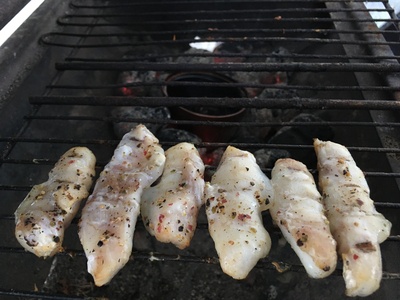
Atlantic cod
Classic Norwegian fish; large-bodied demersal predator found from south coast to Barents Sea. Central to fisheries, popular with anglers and cooks, stocks managed due to past overfishing, versatile in recipes like cod liver and salted cod.
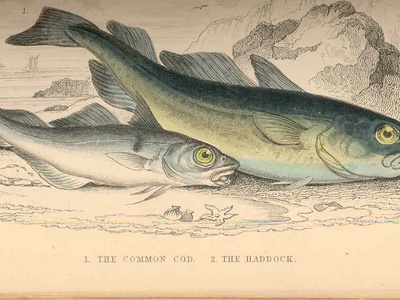
Haddock
Light-flavoured white fish common off southern and western Norway. Important to trawlers and shore fisheries, favored for smoking and fish-and-chips; forms dense shoals and is sought by sport and commercial fishers.
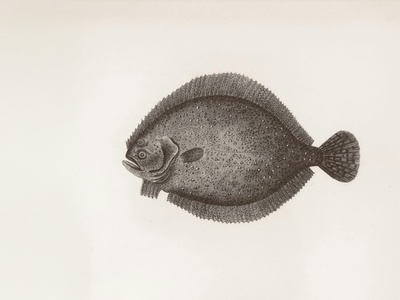
Saithe (coalfish)
Robust, fast-growing gadid common along Norwegian coasts and fjords. Popular with anglers and commercial crews, flesh is firm and used fresh, smoked or salted; often caught with cod and haddock.
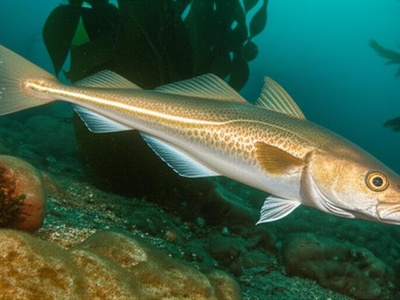
Pollack
Lean, streamlined coastal predator found near kelp and reefs. Popular for shore-angling, prized for its eating quality, often mistaken for saithe but prefers rockier habitats closer to shore.
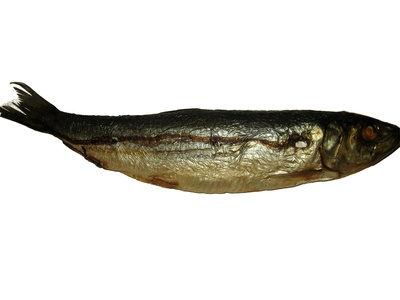
Atlantic herring
Small schooling fish central to Norwegian fisheries and cuisine. Drives coastal economies and supports seabirds/mammals; used in many traditional dishes like pickled herring and local fisheries.
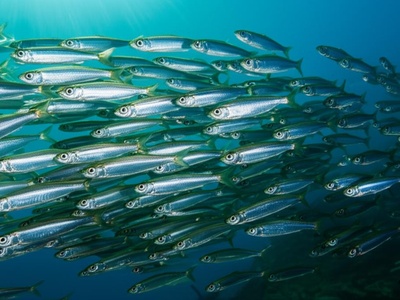
Sprat
Small, oily pelagic fish forming dense shoals in coastal waters. Vital prey for larger fish and seabirds; harvested commercially for reduction and bait.
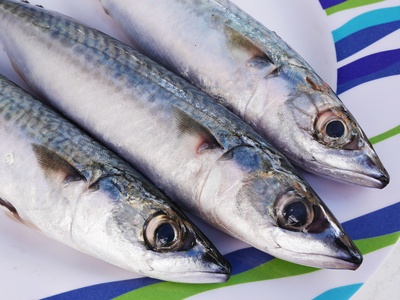
Atlantic mackerel
Fast, migratory pelagic fish arriving in summer to feed. Bright, oily flesh prized grilled or smoked; supports coastal summer fisheries and recreational anglers.
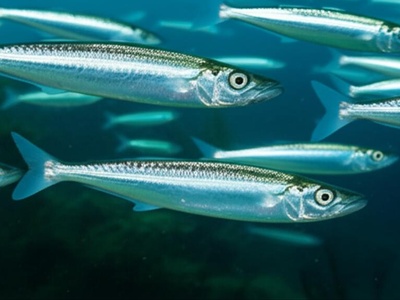
Blue whiting
Slim, schooling fish abundant off Norway. Important for large-scale fisheries and as prey for cod and seabirds; often processed into fillets or fishmeal.
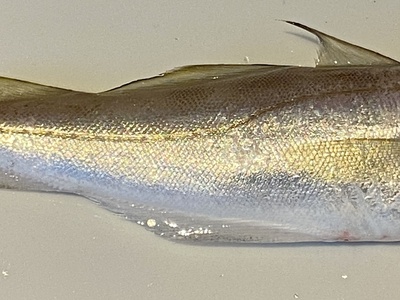
Norway pout
Small gadid widespread around Norway’s shelf. Not typically table fish; supports multi-species fisheries and acts as key prey species in the ecosystem.
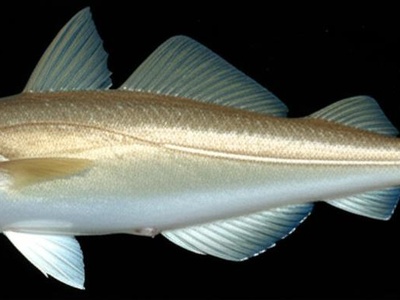
Whiting
Slender gadid common in shallower shelf areas. Good eating when larger, targeted by trawlers and small boats, often caught alongside other groundfish.
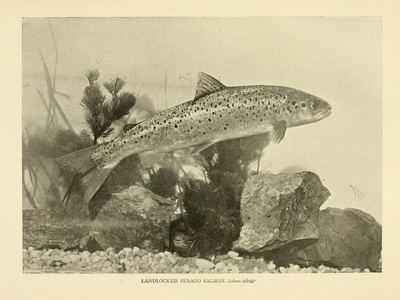
Atlantic salmon
Famous anadromous species returning to Norwegian rivers to spawn. Central to angling culture and cuisine; wild stocks are managed and monitored alongside large aquaculture operations.
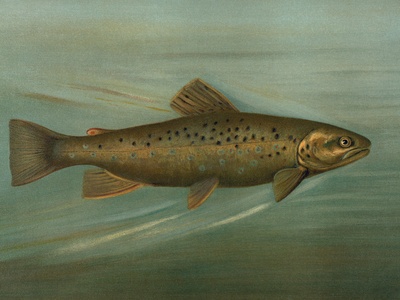
Brown trout (including sea trout)
Versatile freshwater and anadromous trout common across Norway. Sea trout migrate along coasts while river birds are prized by anglers for sport fishing and local culinary use.
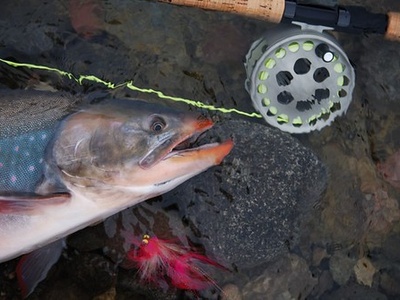
Arctic char
Colourful cold-water salmonid found in arctic lakes and fjords. Often locally prized for its firm, oily flesh; many isolated populations with unique appearances.
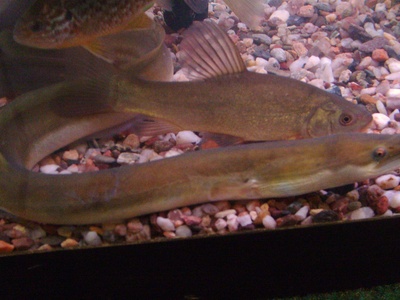
European eel
Eel migrates from Norwegian waters to spawn; historically important in cuisine. Populations have declined sharply; many fisheries are restricted and conservation measures apply.
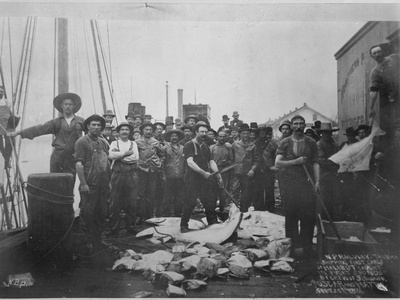
Atlantic halibut
Huge flatfish occasionally caught along Norway’s coasts and deeper shelf. Sought by longliners and big-game anglers; slow-growing and vulnerable, so management is strict.
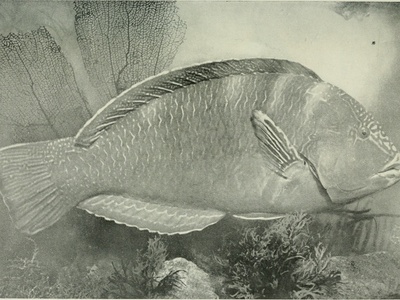
Greenland halibut
Deepwater flatfish common on continental slope and northern grounds. Valuable in trawl fisheries and as a quality whitefish for markets; tolerates cold Arctic waters.
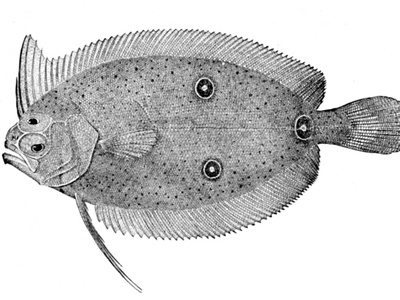
Plaice
Flatfish frequenting sandy shallows in southern and western Norway. Mild, flaky flesh and common in shore fisheries and markets; often caught by trawlers and anglers.
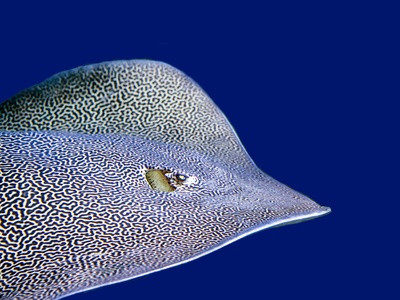
European flounder
Adaptive flatfish found in brackish and coastal habitats. Tolerant of estuarine conditions and fished locally; vary in colour and pattern with habitat.
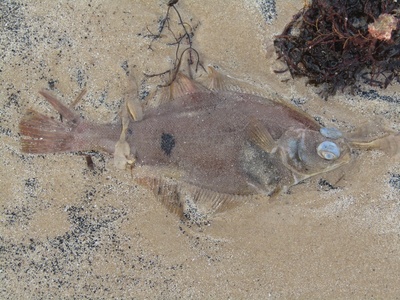
Common dab
Small flatfish abundant on sandy bottoms. Often a bycatch in trawls; edible though less sought-after than plaice or sole, used in regional cooking.
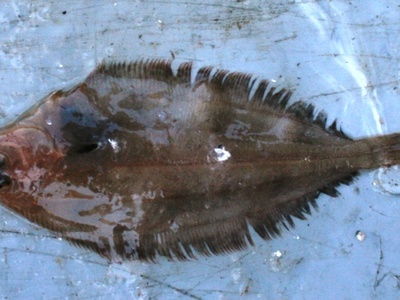
Witch (grey sole)
Elongated flatfish preferring deeper sandy areas. Mild white flesh that’s appreciated in restaurants; often part of mixed-groundfish catches.
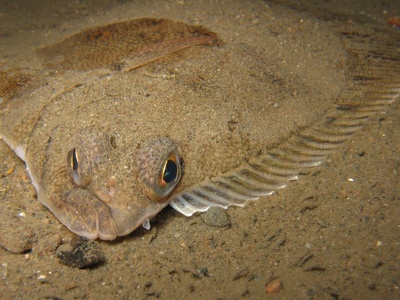
Lemon sole
Medium-sized flatfish common in cold waters; firm texture and flavorful flesh make it popular in seafood markets and restaurants.
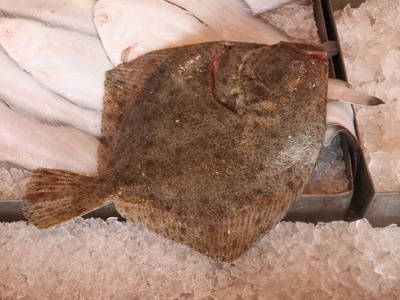
Turbot
Premium flatfish with dense, white flesh. Less common in Norway than further south but present in warmer southern waters; prized by chefs.
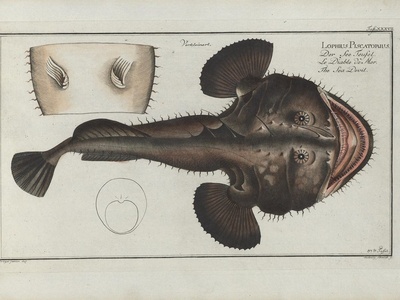
Monkfish (angler)
Odd-looking bottom dweller with a meaty tail prized for eating. Common on muddy bottoms; caught by trawlers and lines and popular in restaurants.
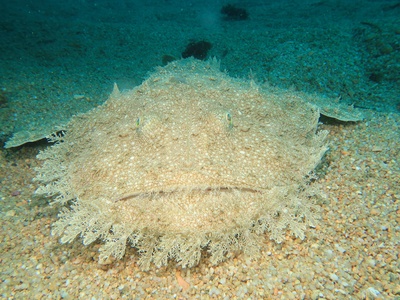
Blackbelly angler
Smaller relative of monkfish found in southern and central shelf areas. Tail meat is eaten similarly; often caught with other demersal species.
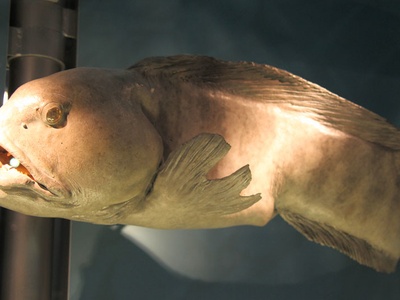
Atlantic wolffish
Large predatory fish with strong teeth for crushing shellfish. Locally valued but vulnerable to overfishing; plays key role in benthic ecosystems.
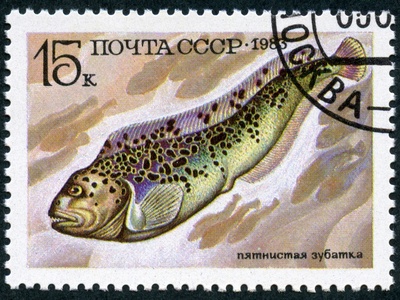
Spotted wolffish
Similar to Atlantic wolffish with bold spots; inhabits deeper northern grounds. Slow-growing and monitored due to sensitivity to fishing.
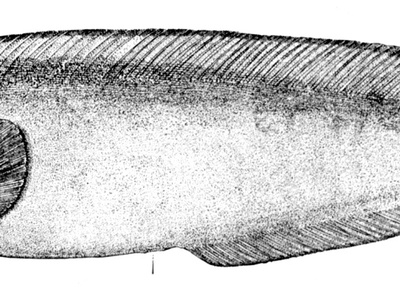
Northern wolffish
Large toothy predator of deep seabeds. Less common than other wolffish, important for biodiversity and under conservation attention in some areas.
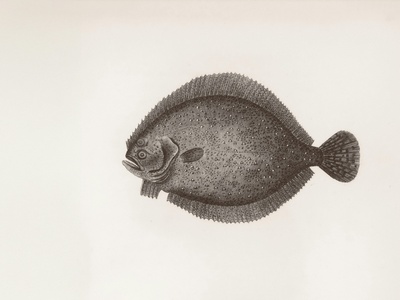
Lumpfish
Rounded, bumpy fish often attached to rocks by suction. Females spawn inshore; caviar-like roe prized and lumpfish are used in salmon farms to remove lice.
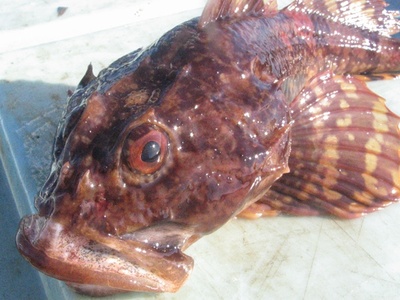
Shorthorn sculpin
Stout bottom-dweller common in shallow rocky habitats. Well-camouflaged ambush predator supporting coastal food webs and popular for tidepool observation.
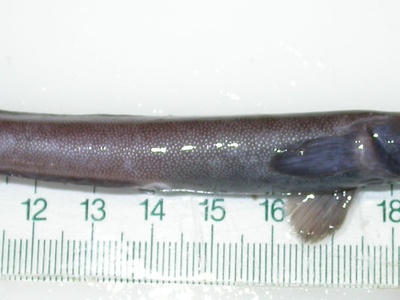
Common eelpout (viviparous)
Slender, eel-like fish giving birth to live young. Tolerant of low salinity and common in sheltered fjords; often overlooked but abundant.
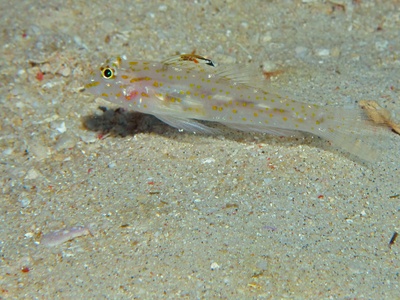
Sand goby
Tiny goby living in sand and seagrass beds. Important prey species and fun to spot on shore; males build nests and guard eggs.
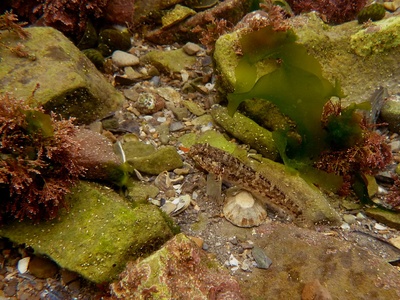
Common goby
Small, hardy goby common in tidepools and estuaries. Adaptable to varying salinity; often seen by shoreline observers.
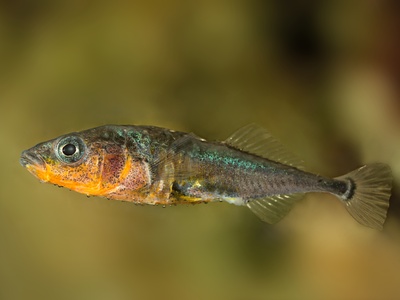
Three-spined stickleback
Tiny, spiny fish found across inland and coastal habitats. Famous for nesting behaviour and ecological studies; a common sight for children and anglers.
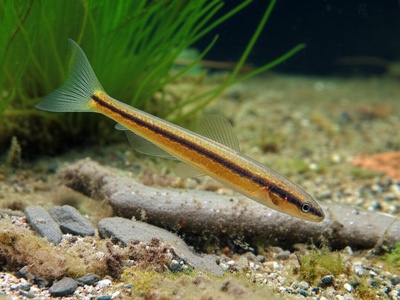
Nine-spined stickleback
Smaller freshwater stickleback with nine dorsal spines. Lives in quiet waters; important in food webs and interesting to naturalists.
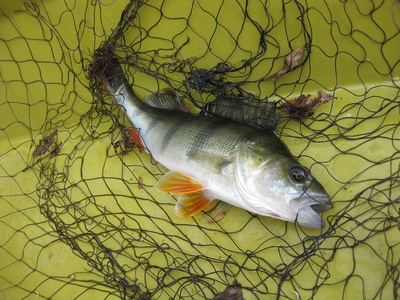
European perch
Striped freshwater predator prized by anglers. Firm white flesh and sporting fight make it a favourite for recreational fishing and local cuisine.
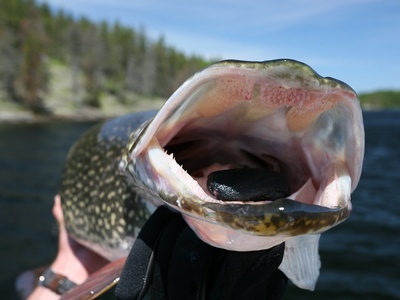
Northern pike
Ambush predator of freshwater systems; prized by anglers for powerful strikes. Widely distributed in inland waters and valued for trophy catches.
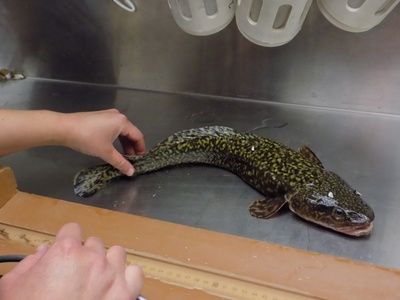
Burbot
Odd freshwater cod relative active in cold months. Eaten traditionally in some regions; spawns in winter and prefers deep, cool habitats.
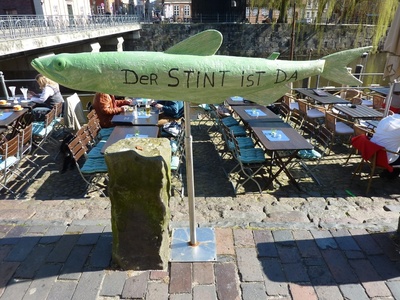
European smelt
Small silvery fish migrating into estuaries to spawn; beloved in coastal communities for pan-frying and smoking during seasonal runs.
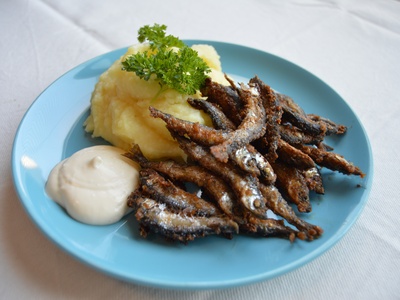
Vendace
Small whitefish living in clear lakes. Important for local fisheries and as prey for larger trout and birds; sought by anglers and netters.
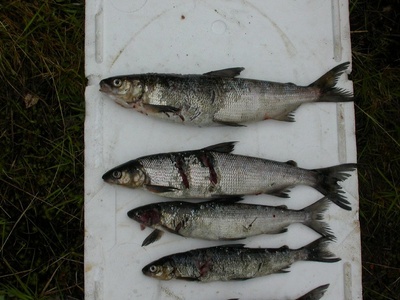
Common whitefish
Variable freshwater whitefish used locally for fillets and smoking. Many isolated populations show distinct sizes and behaviours across Norway.
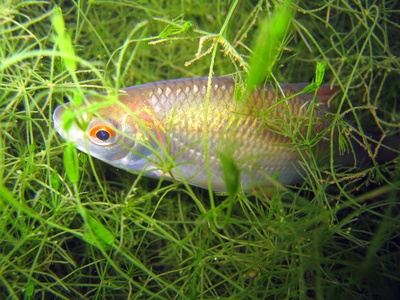
Roach
Widespread freshwater cyprinid living in calm waters. Often part of mixed coarse fisheries and valued in ecological studies and local fishing.
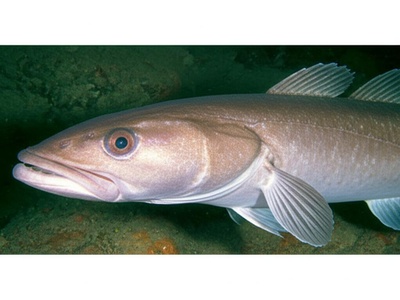
Tusk
Eel-like gadid inhabiting deeper rocky areas. Firm flesh is eaten where landed; frequently encountered as bycatch on deep hooks and trawls.
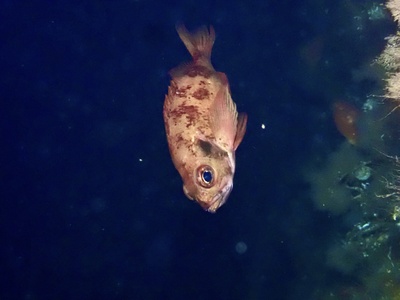
Redfish (ocean perch)
Slow-growing, viviparous rockfish with reddish colour. Important in deepwater fisheries and known for longevity; commonly found on slopes and banks.
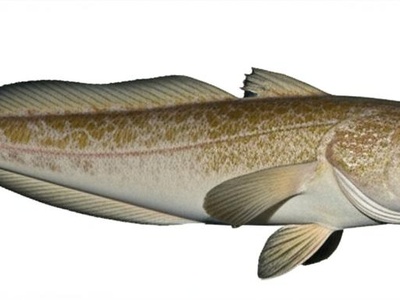
Ling
Long-bodied cod-relative often found in deeper waters. Popular with anglers and trawl fleets; flesh is dense and used fresh or salted.
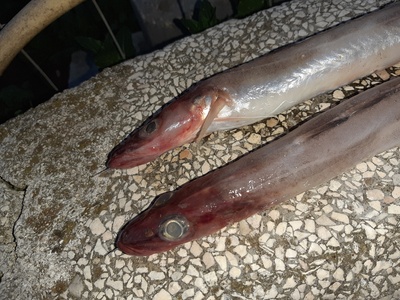
Blue ling
Deepwater relative of ling inhabiting colder, deeper habitats. Targeted in offshore fisheries; slower-growing and less common nearshore.
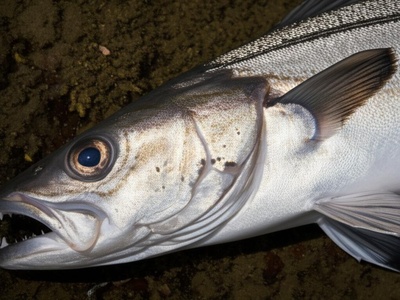
European hake
Long-bodied demersal predator more common in southern Norway. White flaky flesh prized in restaurants; caught by trawlers and longlines.
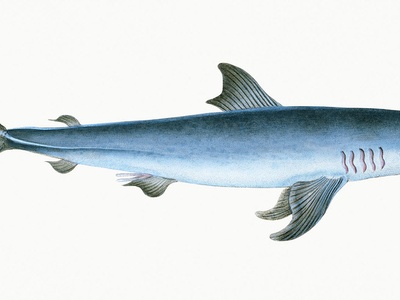
Porbeagle shark
Large pelagic shark that visits Norwegian waters seasonally. Powerful swimmer and historically targeted; conservation and management measures apply due to past declines.
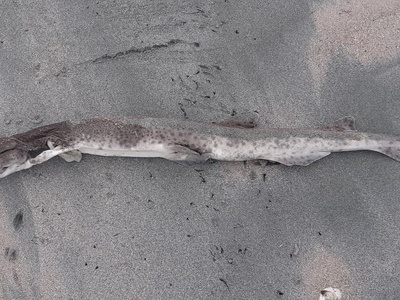
Spiny dogfish
Small shark common in temperate waters. Long-lived and slow-growing, previously overfished in some areas; used in regional cuisines and for stockfish.
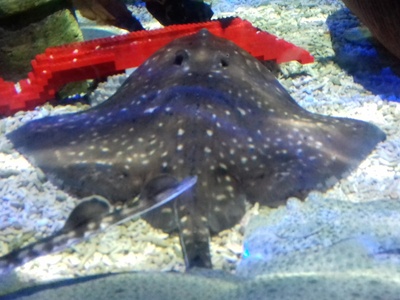
Thornback ray
Moderate-sized ray frequenting shallow coastal grounds. Distinctive thorny back and patterned disc; used in local cuisine where landed.
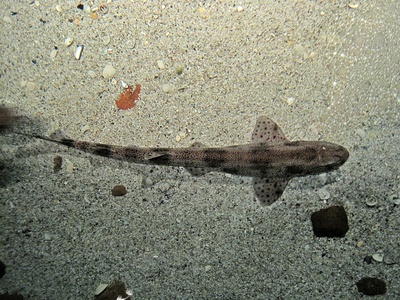
Small-spotted catshark
Small slender shark common on sandy and rocky bottoms. Harmless to people and interesting to beachcombers; often caught as bycatch in coastal nets.
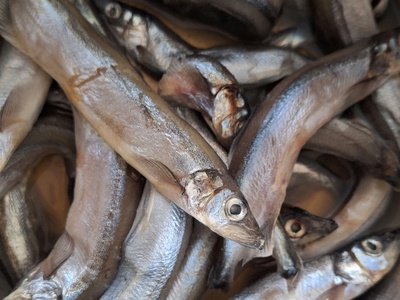
Capelin
Tiny pelagic fish central to Arctic food webs. Massive spawning runs along northern coastlines attract birds and whales; harvested seasonally for bait and food.
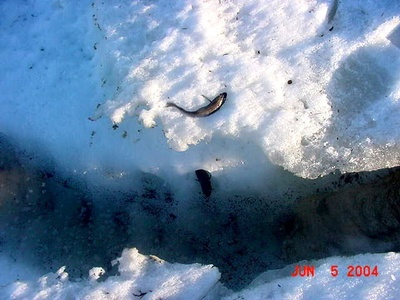
Polar cod
Small cold-water gadid specialized for polar seas. Fundamental prey for seals and seabirds; indicates ice-influenced ecosystems.
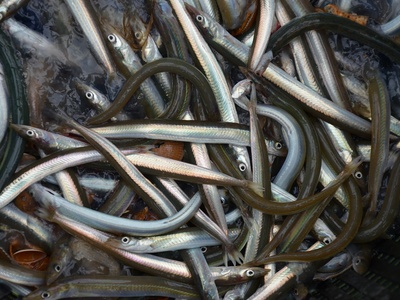
Lesser sandeel
Slender, burrowing fish forming dense shoals on sandbanks. Extremely important as prey for seabirds, cod and marine mammals; targeted by industrial fisheries.
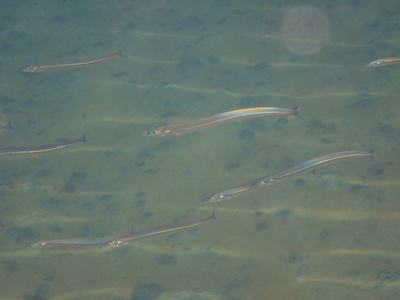
Great sandeel
Larger sand eel species inhabiting sandy bottoms. Major prey item for predators and supports coastal food chains and fisheries indirectly.
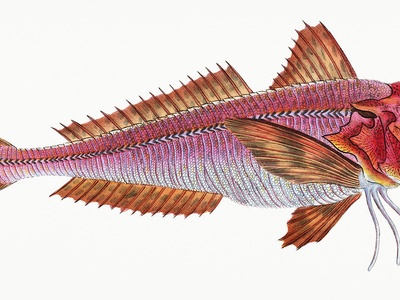
Red gurnard
Colourful bottom fish with wing-like pectorals and “walking” behaviour. Distinctive vocal bones and sought by some fishers for firm white meat.
